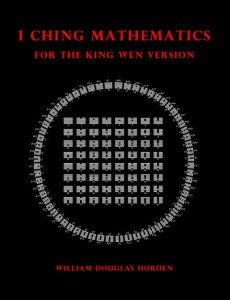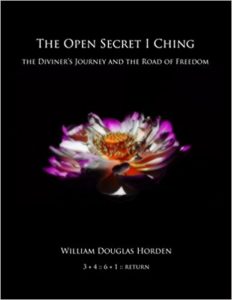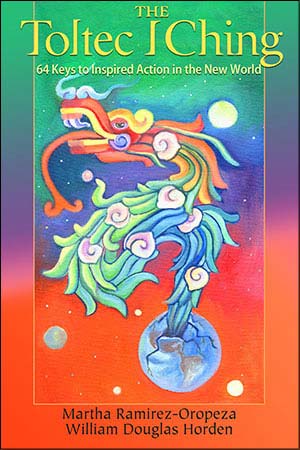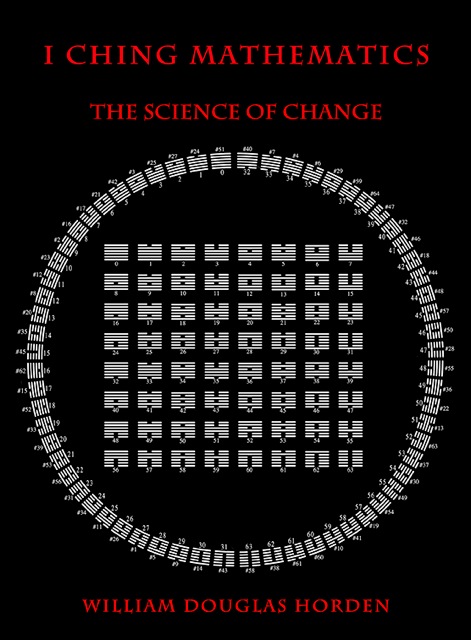 I Ching Mathematics: The Science of Change (Researches On The Toltec I Ching) (Volume 1)
I Ching Mathematics: The Science of Change (Researches On The Toltec I Ching) (Volume 1)
This first volume of Researches on the Toltec I Ching sets forth an entire new science by which to interpret and analyze the inner workings of the sacred technology surrounding the ancient Oracle. The Oracle is that aspect of the numinous that speaks directly to human beings. It is the spiritual half of nature that has, of old, been called the World Soul and, more recently, the Imaginal. It has had numerous incarnations as a divinatory instrument among various cultures but none of those have approached the elegant marriage of complexity and simplicity that marks the system of the I Ching. Nor have any of those other sacred technologies garnered the serious attention and research of so many brilliant men and women across the past three-and-a-half millennia. Times change and with them, the most long-lived relics of human experience. Indeed, change they must if they are to continue being a living part of human experience that extends forward into an increasingly complex future. The core essence of such sacred technologies—those systematized mechanisms by which human awareness comes into unmediated contact with the numinous reality of which it is a part—do not, of course, change. What changes is our capacity to understand the ramifications of that essence. In the case of the I Ching, what has changed is our appreciation of the rational-mystical approach to life: Our growing awareness of the holistic and synergistic nature of life has made us realize that reason-without-spirituality is as cynical as spirituality-without-reason is naive. Its core essence is in fact the very model of rational mysticism: The progressive alternation of foundational polarities into symbols applicable to the widest range of human knowledge provides the rational counterpoint to its mystical relationship with the numinous spirit of the Oracle. Volume II of this series is “The Image and Number Treatise: The Oracle and the War on Fate” Volume III of this series is “The Forest of Fire Pearls Oracle: The Medicine Warrior I Ching”
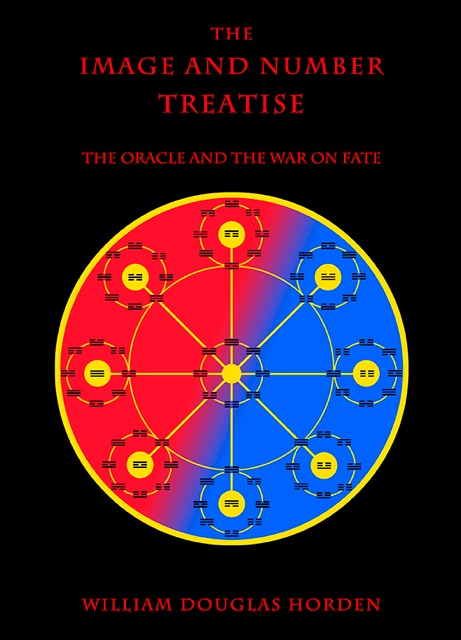 The Image and Number Treatise: The Oracle and the War on Fate (Researches On the Toltec I Ching) (Volume 2)
The Image and Number Treatise: The Oracle and the War on Fate (Researches On the Toltec I Ching) (Volume 2)
This second volume of Researches On The Toltec I Ching reinterprets significant portions of the Ten Wings classic commentary on the I Ching in light of the transcultural approach of The Toltec I Ching. Specifically, it renders the sections known as Discussion of the Trigrams and the Great Treatise into terms consistent with the mystical-rational methodology of The Toltec I Ching. In doing so, it follows the structure laid out in Book II: The Material as presented in the Wilhelm/Baynes translation of The Book of Changes. The Oracle communicates by the law of meaningful coincidence, using the apparently random tossing of coins to build up the hexagrams line-by-line. This ages-old method of consulting the Oracle is known as The Forest Of Fire Pearls. Volume I of this series is “I Ching Mathematics: The Science of Change” Volume III of this series is “The Forest of Fire Pearls Oracle: The Medicine Warrior I Ching”
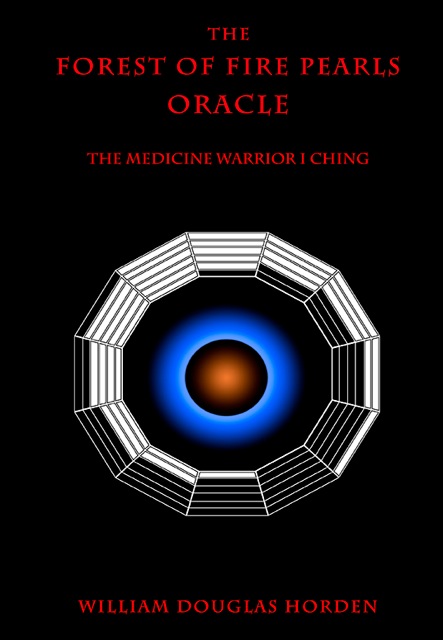 The Forest of Fire Pearls Oracle: The Medicine Warrior I Ching (Researches On The Toltec I Ching) (Volume 3)
The Forest of Fire Pearls Oracle: The Medicine Warrior I Ching (Researches On The Toltec I Ching) (Volume 3)
This third volume of Researches On The Toltec I Ching is atavistic in that it reverts to the more primitive form of the original divinatory text, which consisted of mantic, or oracular, formulas with little or no commentary attached. In that vein, the oldest layers of the Book Of Changes furthered the oral tradition, making use of mnemonic aphorisms whose poetic-symbolic nature invoked the Oracle’s message within the mind of the diviner. The title of this volume, The Forest Of Fire Pearls Oracle, comes from the ancient Chinese name for the traditional coin oracle method of consulting the I Ching. The present volume can be consulted as a standalone divinatory text. It is, however, designed to be used in conjunction with The Toltec I Ching—as an adjunct to the material in that book, the present mantic formulas expand the range of interpretations open to the diviner. There are, beyond that, other features of this volume that recommend its study alongside The Toltec I Ching. First, it places The Toltec I Ching hexagrams within the context of the older King Wen version. This it does by comparing both the individual hexagrams from each version, as well as the overall sequence of hexagrams from each version. And, second, it provides mantic formulas for the unchanging lines in each hexagram. This is especially useful in analyzing a divination closely, since it is seldom the case that all six lines change in a reading. The Line Changes for a reading can, of course, be found in The Toltec I Ching hexagram texts, while the present volume provides a glimpse into the inertial, or unchanging, issues of the situation represented by the hexagram. Volume I of this series is “I Ching Mathematics: The Science of Change” Volume II of this series is “The Image and Number Treatise: The Oracle and the War on Fate.”
I Ching Mathematics for the King Wen Version (Researches on the Toltec I Ching) (Volume 4)
This volume of I Ching Mathematics for the King Wen Version sets forth an entire new science by which to interpret and analyze the inner workings of the sacred technology surrounding the ancient Oracle. The Oracle is that aspect of the numinous that speaks directly to human beings. It is the spiritual half of nature that has, of old, been called the World Soul and, more recently, the Imaginal. It has had numerous incarnations as a divinatory instrument among various cultures but none of those have approached the elegant marriage of complexity and simplicity that marks the system of the I Ching. Nor have any of those other sacred technologies garnered the serious attention and research of so many brilliant men and women across the past three-and-a-half millennia. Times change and with them, the most long-lived relics of human experience. Indeed, change they must if they are to continue being a living part of human experience that extends forward into an increasingly complex future. The essence of such sacred technologies—those systematized mechanisms by which human awareness comes into unmediated contact with the numinous reality of which it is a part—does not, of course, change. What changes is our capacity to understand the ramifications of that essence. In the case of the I Ching, what has changed is our appreciation of the rational-mystical approach to life: Our growing awareness of the holistic and synergistic nature of life has made us realize that reason-without-spirituality is as cynical as spirituality-without-reason is naive. Its core essence is in fact the very model of rational mysticism: The progressive alternation of foundational polarities into symbols applicable to the widest range of human knowledge provides the rational counterpoint to its mystical relationship with the numinous spirit of the Oracle.
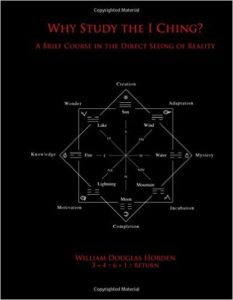 Why Study the I Ching?: A Brief Course in the Direct Seeing of Reality (Researches on the Toltec I Ching) (Volume 5)
Why Study the I Ching?: A Brief Course in the Direct Seeing of Reality (Researches on the Toltec I Ching) (Volume 5)
This book takes up the matter of the underlying reality, how to perceive it and how to participate in it authentically. It does so in the context of the I Ching’s symbology, particularly its eight trigrams. From this, the reader may safely assume that this is not a beginner’s book—however, the Introduction does carry readers all the way through the introductory philosophical and symbolic material of the I Ching, so the inspired beginner might feel equipped to track unfamiliar terrain. Those familiar with the I Ching may benefit from the Introduction as well, since my terminology and perspective may differ from the received version to which they are accustomed.
The Open Secret I Ching: The Diviner’s Journey and the Road of Freedom (Researches on the Toltec I Ching) (Volume 6)
If The Toltec I Ching were an archeological dig, The Open Secret I Ching is the artifact uncovered. Bringing together all the original material that eventually formed the vision of The Toltec I Ching, The Open Secret I Ching provides a firmer understanding of the dynamics leading to the re-ordering of the ancient book of divination. Even more anti-authoritarian than The Toltec I Ching, The Open Secret I Ching examines all the archetypal situations facing the Spirit of the Age and advises on strategies and tactics by which free-living people can avoid being dominated by those who would rule them. This book is Volume Six in The Researches on the Toltec I Ching series.
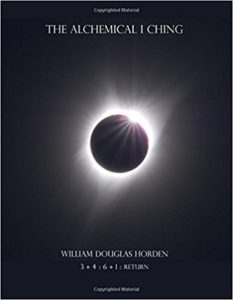 The Alchemical I Ching: 64 Keys to the Secret of Internal Transmutation (Researches on the Toltec I Ching) (Volume 7)
The Alchemical I Ching: 64 Keys to the Secret of Internal Transmutation (Researches on the Toltec I Ching) (Volume 7)
The purpose of this small work is to shorten the thirty years traditionally assigned to the completion of one’s work of becoming a true person—one who has fulfilled the timeless potential of human nature’s innate perfectibility. Of the avenues dedicated to that work, one of the oldest and best-documented is that of Alchemy, the art of refining the base nature into the sublime—often symbolized as the transmutation of lead into gold. This conversion of base matter into the spiritualized matter of the philosopher’s stone is equated, especially in esoteric Taoist thought, with the awakening, or enlightenment, experience.
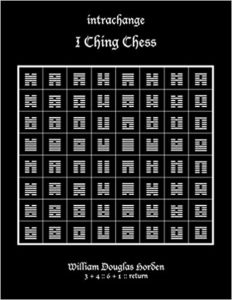 intrachange: I Ching Chess (Researches on the Toltec I Ching) (Volume 8)
intrachange: I Ching Chess (Researches on the Toltec I Ching) (Volume 8)
One whole Age ago, there was a game of such perfect proportions that it captured the very language of creation itself. It was the common source of its people’s sport, spirituality, and art. With it, the future was foretold and the past memorialized forever. With it, the coming generations were already cared for and the generations past were always advising the living. With it, civilization flowered as spontaneously as a bloom and its citizens governed themselves. With it, the grand cycles of making and unmaking were understood and the pursuits of its people were timed to expand during the one and to contract during the other. With it, the natural and the supernatural met on the playing field of its people. With it, art and science and religion were all one thing.
Its original name can no longer be recalled but its meaning translated as The Pattern of Order and Chance—so named because it captured the code of life and mind that underlies the language of creation itself: its originators stood at the very dawn of consciousness, witnesses first-hand to the pattern of perception awakening within them.
Every player since then has been heir to their saying: Because our mind is made from the same fabric as the rest of nature, our pattern of perception is identical to the pattern of what we perceive. All this was long ago, when the world was new and young and whole, when a game of perfect proportions lay at the very heart of that wholeness. But the wholeness did not last. Division set in and ruled all things. And so the world changed and dark times fell on the game of light. But its players were prepared, for the Game had foretold the manner and the moment of its own departing: in accordance with its will, its players divided the game into two parts and carried them far away from each other—far enough that each might survive apart where they both would have surely perished together. To the West they carried its body, where it came to be called Chess. To the East they carried its spirit, where it came to be called I Ching. By this ruse the two have been nurtured until the day they could again be one. Until that time, long ago foretold by the Game, for the reunion of its two halves. Until this time.
The Before Heaven I Ching: Reading the Text of Creation (Researches on the Toltec I Ching) (Volume 9)
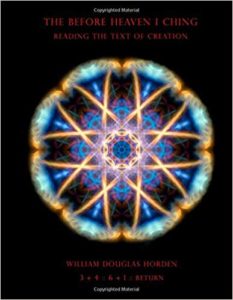 Restructures the order of the I Ching hexagrams according to the Xiantian bagua, or Earlier Heaven trigram, arrangement and provides written commentaries for the hexagrams. The resultant order runs from Creation-to-Completion and is interpreted as the primary model of perception of inner and outer reality. This is Volume Nine in the series, Researches on the Toltec I Ching, and follows that progression of investigations into the psycho-spiritual realm of intending and manifesting change. In that regard, it is not specifically a divinatory text, although it can be used in conjunction with other texts more directly consulting the Oracle.
Restructures the order of the I Ching hexagrams according to the Xiantian bagua, or Earlier Heaven trigram, arrangement and provides written commentaries for the hexagrams. The resultant order runs from Creation-to-Completion and is interpreted as the primary model of perception of inner and outer reality. This is Volume Nine in the series, Researches on the Toltec I Ching, and follows that progression of investigations into the psycho-spiritual realm of intending and manifesting change. In that regard, it is not specifically a divinatory text, although it can be used in conjunction with other texts more directly consulting the Oracle.
The hexagram interpretations are based on traditional animistic views of spirit-in-nature, such as Taoism, and amplified by esoteric Sufi perspectives, exemplified by the work of Henry Corbin on the Imaginal realm. This work concentrates on symbolic perception and interpretation, particularly as images are used as foci of intentions that affect the world of manifestation. The line changes are interpreted here as specific intentions within the soul realm of the Imaginal worthy of emanating into the manifestation realm.
I Ching Talismans: Forge of Spiritual Sigils (Vol. 10)
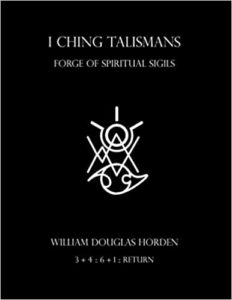 Words are sacred. I shall do my best not to waste them. Words have power: spiritual power; magical power; the power to evoke images. Images have the power to manifest change. The power to manifest change is magic. Change, as it affects human lives, falls into two archetypal categories: good fortune and misfortune.
Words are sacred. I shall do my best not to waste them. Words have power: spiritual power; magical power; the power to evoke images. Images have the power to manifest change. The power to manifest change is magic. Change, as it affects human lives, falls into two archetypal categories: good fortune and misfortune.
One object of the wisdom teachings, particularly those relating to the diviner-shaman, is to lengthen times of good fortune and shorten times of misfortune. Talismans are images vested with the power to attract good fortune and ward off misfortune. Sigils are images vested with the power to bring about change.
The following principles outline the web of spiritual cause-and-effect giving rise to talismanic magic. Each of these axioms produces repercussions that ripple across the universe of meaning, and so, deserves more than cursory attention.
- Soul is images.
- Images are the substance of soul.
- Images are soul.
- Individual soul is a subjective reality most commonly experienced in ordinary dreams.
- Universal soul is an objective reality most commonly experienced in extraordinary dreams.
- Objective soul is the World Soul, homeland of individual souls.
- The material world is the manifestation of the World Soul.
- Every material form has a soul.
- Individual souls manifest as material forms, such as stones, plants, animals, people, water, air, fire, sounds, symbols, words, etc.
- Images awakened in the World Soul manifest in the material world.
- Images are awakened by intention.
- Intention is formed by uniting concentration and reverence.
- Talismans and Sigils are images.
If the above sounds like nonsense for which no credible proof exists, then there is little point in you wasting your time with the rest of this book and I trust you will divest yourself of it at your earliest convenience. If, however, it resonates with you, then you are already on the path of animist-shaman-healer-diviner and you may find this book a useful tool in fulfilling the purpose of this lifetime.
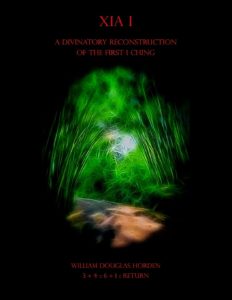
Xia I: A Divinatory Reconstruction of the First I Ching (Vol. 11)
According to the court historians of the Chou Dynasty, two sequences of the I Ching hexagrams preceded that of the so-called King Wen version we know today. Whereas that hexagram sequence of the received version of that Chou I begins with the hexagram Heaven over Heaven, the court historians of the time report that the sequence attributed to the earlier Shang Dynasty began with the hexagram Earth over Earth, and that of the even earlier Xia Dynasty began with the hexagram Mountain over Mountain.
—
What this book is not: It is pointedly not a scholarly text or academic rendition of an actual text of antiquity. It does not present an authentic rendering of any such relic—there is no physical text from that time period.
—
What this book is: It is a divination. An extended divination, to be specific. Based on my fifty year relationship with the Oracle and its symbols, this is my reading of the hypothetical reconstructed hexagram sequence hinted at by the Chou court historians.
